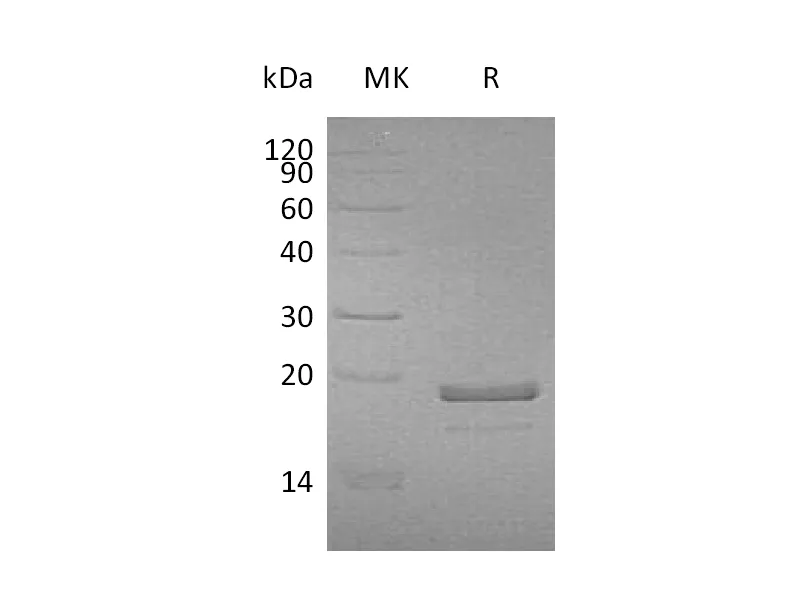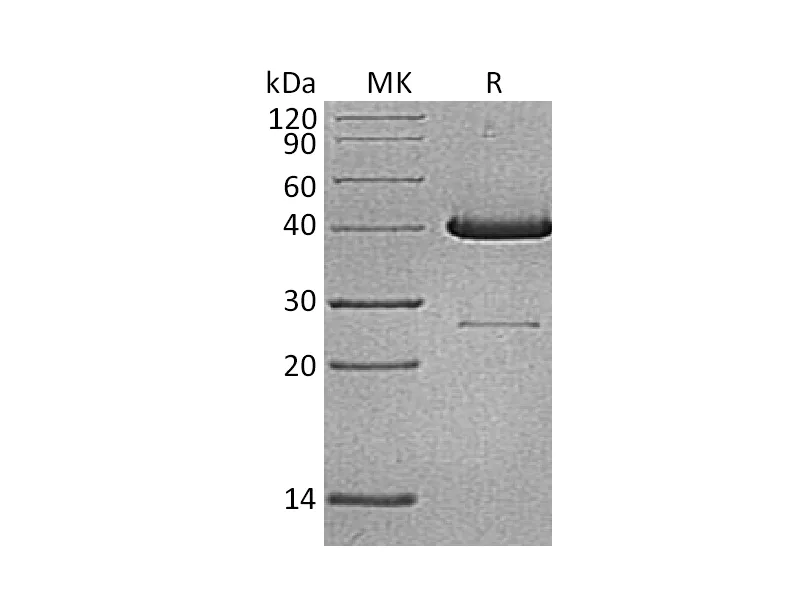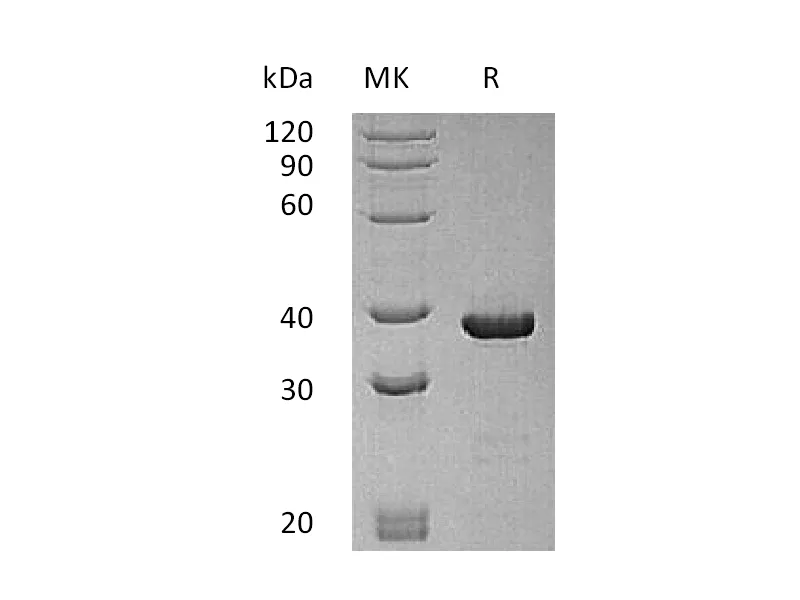| 产品名称 |
Recombinant Human MIA (C-6His) |
| 英文名称 |
MIA |
| 纯度 |
Greater than 95% as determined by reducing SDS-PAGE |
| 内毒素 |
<1 EU/µg as determined by LAL test. |
| 蛋白构建 |
Recombinant Human Melanoma Inhibitory Activity Protein is produced by our E.coli expression system and the target gene encoding Gly25-Gln131 is expressed with a 6His tag at the C-terminus. |
| Accession |
Q16674 |
| 表达宿主 |
E.coli |
| 种属 |
Human |
| 预测分子量 |
13.31 KDa |
| 制剂 |
Lyophilized from a 0.2 μm filtered solution of PBS, pH 7.4. |
| 运输方式 |
The product is shipped at ambient temperature.Upon receipt, store it immediately at the temperature listed below. |
| 稳定性&储存 |
Store at ≤-70°C, stable for 6 months after receipt.Store at ≤-70°C, stable for 3 months under sterile conditions after opening. Please minimize freeze-thaw cycles. |
| 复溶 |
Always centrifuge tubes before opening.Do not mix by vortex or pipetting.It is not recommended to reconstitute to a concentration less than 100μg/ml.Dissolve the lyophilized protein in distilled water.Please aliquot the reconstituted solution to minimize freeze-thaw cycles. |
| 分子别名 |
| Melanoma-Derived Growth Regulatory Protein; Melanoma Inhibitory Activity Protein; MIA |
| 背景介绍 |
| Melanoma Inhibitory Activity Protein (MIA) is an autocrine growth regulatory protein secreted from chondrocytes and malignant melanoma cells, which was the first discovered member of a family of secreted cytokines termed the MIA/OTOR family. The four known members of this family: MIA, MIA2, OTOR and TANGO each contain a Src homology-3 (SH3)-like domain. MIA acts as a potent tumor cell growth inhibitor for malignant melanoma cells and some other neuroectodermal tumors, including gliomas, in an autocrine fashion and promotes melanoma metastasis by binding competitively to fibronectin and laminin in a manner that results in melanoma cell detachment from the extracellular matrix in vivo. The protein MIA has been shown to represent a very sensitive and specific serum marker for systemic malignant melanoma that might be useful for staging of primary melanomas, detection of progression from localized to metastatic disease during follow-up, and monitoring therapy of advanced melanomas. Elevated levels of MIA may represent a clinically useful marker for diagnosis of melanoma metastasis as well as a potential marker for rheumatoid arthritis. |
注意事项
本司产品仅用于科研,不用于临床诊断和治疗




